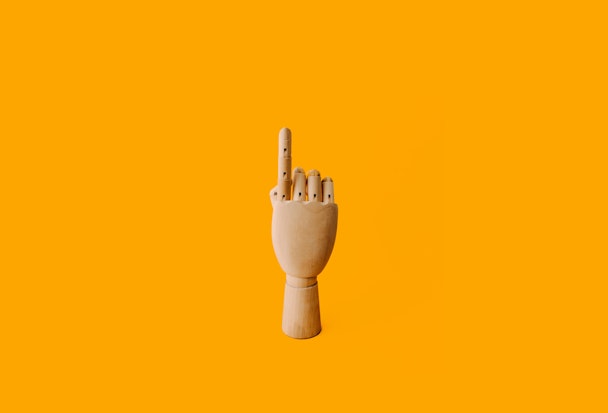It's time to take digital inclusion more seriously
Enough with empty words; it’s time to finally act on inclusive web design, says Cyber-Duck's Danny Bluestone.

Cyber-Duck will campaign for inclusive digital design this Christmas / Charles Deluvio via Unsplash
For most of us, doing a shop or applying for a job online (or paying bills, or binge-watching the latest Netflix series) is an easy click, swipe or tap away. But for people who are blind and rely on a screen reader, or who have motor problems and rely on dictation software, or who are autistic and struggle with sensory overload, navigating the digital world is often an entirely different story.
Nearly all apps and websites are inaccessible in some way. Nearly 98% of homepages do not meet accessibility standards. With the cost of living crisis looming and many products and services only available (and cheaper) online, poor accessibility creates huge practical and economic barriers for over 20% of the UK’s population every time they use digital products. It’s not good enough.
Accessibility is non-negotiable
This festive season, we are calling on the digital industry, from product owners and marketers to creative directors and designers, to take digital inclusion seriously and stop treating accessibility guidelines like a tick box or optional extra (if they even acknowledge it at all; the evidence mostly shows that they don’t). No one should feel excluded because of poorly designed digital experiences. Not this Christmas, not ever.
Tackling this issue means really listening to people’s lived experiences. So, we invited people with a range of visible and hidden conditions and disabilities: from renowned disability campaigners, TV presenters, Paralympians and artists, to our very own user experience (UX) designers and developers, to share their personal stories of the barriers they face using digital products, and what they would love to have instead.
For anyone not going through life with a condition or disability, the #AllIWantForDigital campaign may well be an eye-opening experience and make you stop and look at digital design differently. Particularly when you realize that many of the challenges they describe can affect us all in different situations and times of our lives.
Advertisement
The problem with digital design
Former BBC technology correspondent Rory Cellan-Jones, who has Parkinson’s (one in 37 people will be diagnosed with the disease) talks about the importance of voice-to-tech software because it is hard for him to type. His experience with many websites is that it’s difficult to find the buttons that support this feature, which leads to frustration.
Our diversity and accessibility lead at Cyber-Duck, Yahye Siyad, who is visually impaired, ironically talks about the challenges of overly accessible websites. When he uses his screen reader to try to do an online supermarket shop, there is no control or hierarchy over the audible presentations of numerous special offers and promotions, meaning it’s almost impossible to do any basic shopping. A lack of attention to image alt tags also makes the product information useless.
We’re not the only people talking about this. Apple recently launched ‘The Greatest’, a campaign highlighting new accessibility features across their products and a commitment to improving accessibility through innovation which is to be applauded. The people and assistive technology, including voice description and activation, gesture control, shown in the campaign film are truly brilliant and inspiring.
Still, a tiny disclaimer at the end states: ‘some features, applications and services may not be available in all product models, regions or languages’, showing just how challenging it is to make digital truly inclusive at scale.
Advertisement
The digital divide
We cannot overlook a huge discrepancy where people on lower incomes (which those with disabilities disproportionately fall into) and those in developing countries are unable to access digital due to cost. We need to see accessible technology deployed on basic models, at every price point, in every country. We’ve come a long way, but we still have a long way to travel.
Brands, organizations and the digital industry need to close this gap between good intentions and positive action by designing more inclusive and accessible experiences for everyone, which are also affordable.
This goal can only be achieved by including diverse human beings in the
entire digital design process. But while 19% of the working population has a disability and only 9% of UK digital workers do, we need to transform our businesses, our recruitment and working processes to be more inclusive.
Accessibility is never done. New tech is always being developed, meaning websites and apps become out of date. It’s not a one-and-done activity, it’s an ongoing journey that we must all commit to.
Suggested newsletters for you
Content by The Drum Network member:

Cyber-Duck
Established in 2005, Cyber-Duck is a leading digital agency that works with exciting startups and global brands such as Cancer Research Technology, The European...
Find out more
